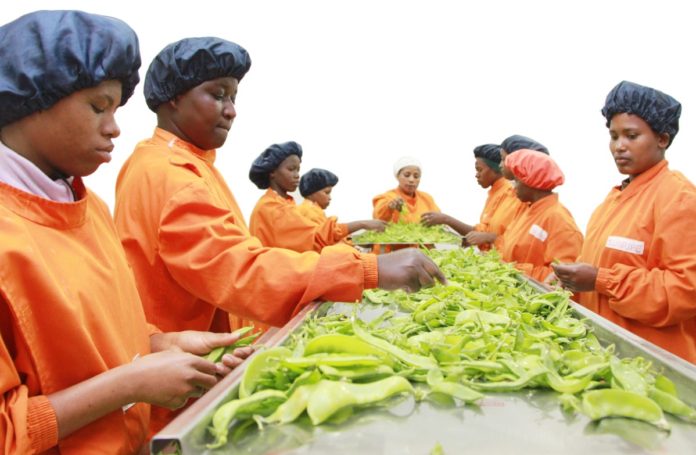By Lawrence Paganga
The East African Community (EAC) unveiled its annual US$25 million project to export fruit and vegetable regionally and internationally.
If the strategic project sails through, it will see the EAC doubling its fruit and vegetable exports.
Founded in 2000, the EAC is an intergovernmental organisation composed of six countries in the African Great Lakes region in eastern Africa: Burundi, Kenya, Rwanda, South Sudan, Tanzania, and Uganda. Uhuru Kenyatta, the president of Kenya, is the current EAC’s chairman.
In its 10 year strategic plan for 2021-2031, the EAC projects to increase the farming area under fruit production by five percent, to 10 million hectares.
If implemented, the intra-EAC trade in fruit and vegetable products would increase from the current $9.9 million to $25 million by 2031.
The region also plans to increase vegetable production by five percent of area cultivated, to 45 million hectares from 32.8 million hectares, with productivity increasing by at least three percent.
“If you look at our Strategic Plan for the years 2021 to 2031, the EAC produces a wide range of fruits & vegetables, which can be exported to regional and international markets,” Christopher Bazivamo, the EAC deputy secretary-general in charge of productive and social sectors, said.
“The fruit and vegetable sector is important to the region due to its multi-sectoral nature of contributing to food security, nutrition and economic development through value addition,” he said.
Meanwhile, the Food and Agriculture Organisation (FA0) said enhancing food control systems was a crucial part of growing and sustaining the expansion of intra-African agricultural trade.
In this respect, FAO is providing the necessary support to strengthen the capacity of countries to comply with food safety standards and facilitate trade.
Ameir Mbonde, FAO Regional Office for Africa trade policy specialist described the African Continental Free Trade Area (AfCFTA) as a global game changer.
AfCFTA is one of the world’s largest international free trade areas that started trading under preferential arrangements on 1 January 2021.
“To date, 42 out of 55 African countries have ratified the agreement, and 88 percent of the negotiations on product-specific rules of origin have been concluded, covering more than 70 percent of intra-African trade according to the AfCFTA secretariat in 2021,” Mbonde said.
“However, a significant shortcoming of the agreement is that many nutrition-sensitive goods may not be fully liberalised or progressively liberalised over longer periods, as indicated by ongoing negotiations on tariff offers. Examples of protected goods include live animals, meat, fish, milk and dairy products, fruit and vegetables, coffee, tea, spices, oilseeds and sugars.
Africa’s agricultural commodities and raw materials have traditionally dominated trade with the rest of the world (cocoa, coffee, cotton, tobacco and spices) with a mix of processed goods (cane and beet sugar, prepared or preserved tunas, wine and other food preparations).”
He added: “For the AfCFTA to reach its full potential by exploiting the full range of the agri-food value chain, including agro-processing, governments and development partners need to step up efforts to scale up intra-African trade by providing policy and capacity-building support to the private sector, programme development, knowledge management, and data collection and analysis.”









